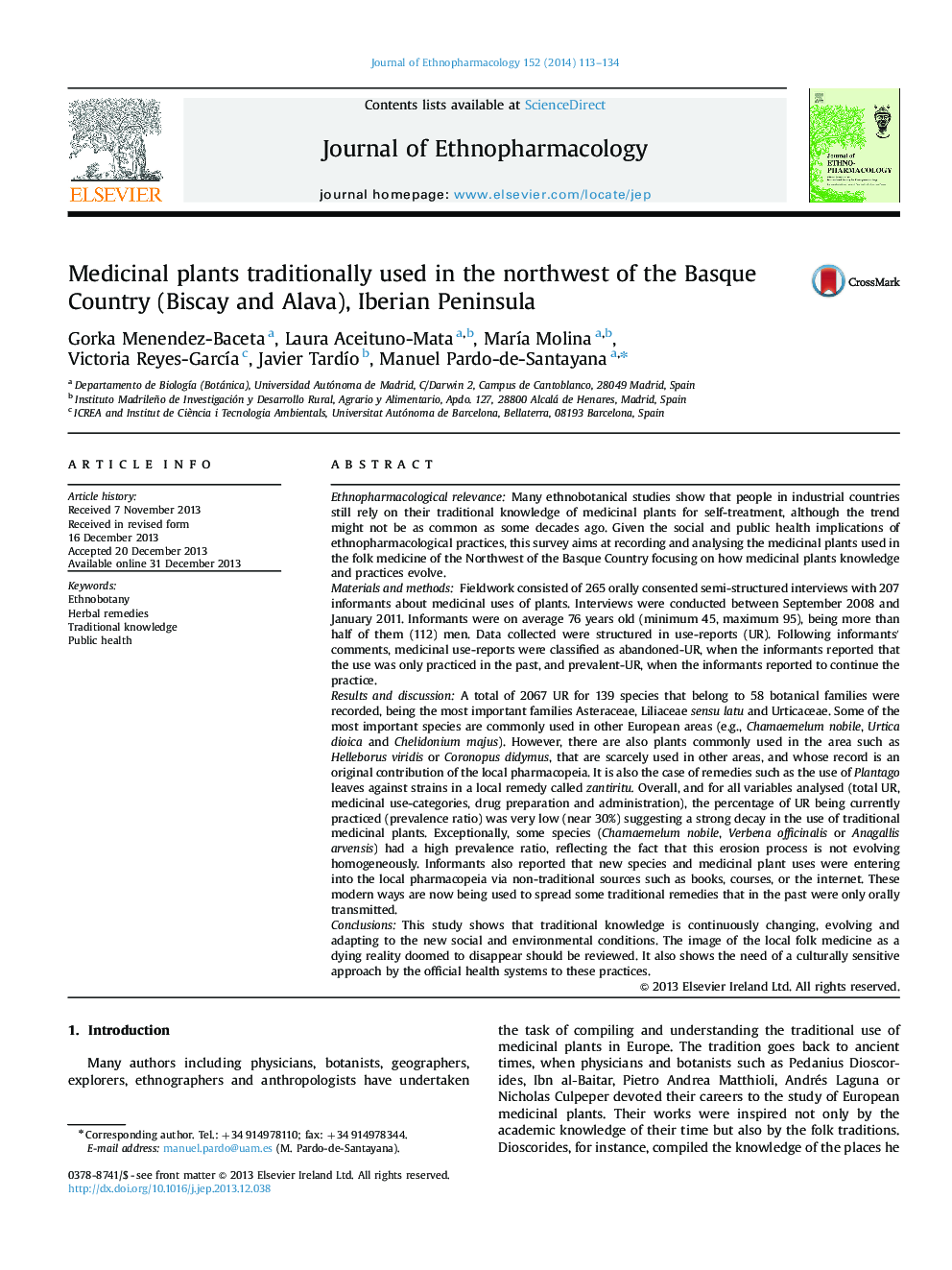| کد مقاله | کد نشریه | سال انتشار | مقاله انگلیسی | نسخه تمام متن |
|---|---|---|---|---|
| 2545216 | 1123941 | 2014 | 22 صفحه PDF | دانلود رایگان |

Ethnopharmacological relevanceMany ethnobotanical studies show that people in industrial countries still rely on their traditional knowledge of medicinal plants for self-treatment, although the trend might not be as common as some decades ago. Given the social and public health implications of ethnopharmacological practices, this survey aims at recording and analysing the medicinal plants used in the folk medicine of the Northwest of the Basque Country focusing on how medicinal plants knowledge and practices evolve.Materials and methodsFieldwork consisted of 265 orally consented semi-structured interviews with 207 informants about medicinal uses of plants. Interviews were conducted between September 2008 and January 2011. Informants were on average 76 years old (minimum 45, maximum 95), being more than half of them (112) men. Data collected were structured in use-reports (UR). Following informants' comments, medicinal use-reports were classified as abandoned-UR, when the informants reported that the use was only practiced in the past, and prevalent-UR, when the informants reported to continue the practice.Results and discussionA total of 2067 UR for 139 species that belong to 58 botanical families were recorded, being the most important families Asteraceae, Liliaceae sensu latu and Urticaceae. Some of the most important species are commonly used in other European areas (e.g., Chamaemelum nobile, Urtica dioica and Chelidonium majus). However, there are also plants commonly used in the area such as Helleborus viridis or Coronopus didymus, that are scarcely used in other areas, and whose record is an original contribution of the local pharmacopeia. It is also the case of remedies such as the use of Plantago leaves against strains in a local remedy called zantiritu. Overall, and for all variables analysed (total UR, medicinal use-categories, drug preparation and administration), the percentage of UR being currently practiced (prevalence ratio) was very low (near 30%) suggesting a strong decay in the use of traditional medicinal plants. Exceptionally, some species (Chamaemelum nobile, Verbena officinalis or Anagallis arvensis) had a high prevalence ratio, reflecting the fact that this erosion process is not evolving homogeneously. Informants also reported that new species and medicinal plant uses were entering into the local pharmacopeia via non-traditional sources such as books, courses, or the internet. These modern ways are now being used to spread some traditional remedies that in the past were only orally transmitted.ConclusionsThis study shows that traditional knowledge is continuously changing, evolving and adapting to the new social and environmental conditions. The image of the local folk medicine as a dying reality doomed to disappear should be reviewed. It also shows the need of a culturally sensitive approach by the official health systems to these practices.
Figure optionsDownload high-quality image (374 K)Download as PowerPoint slide
Journal: Journal of Ethnopharmacology - Volume 152, Issue 1, 27 February 2014, Pages 113–134